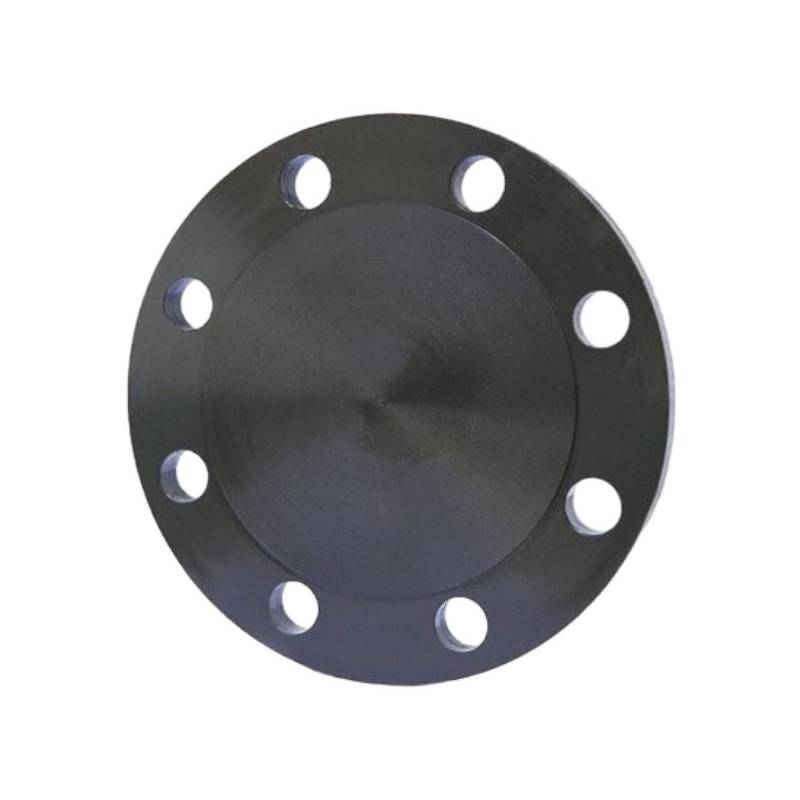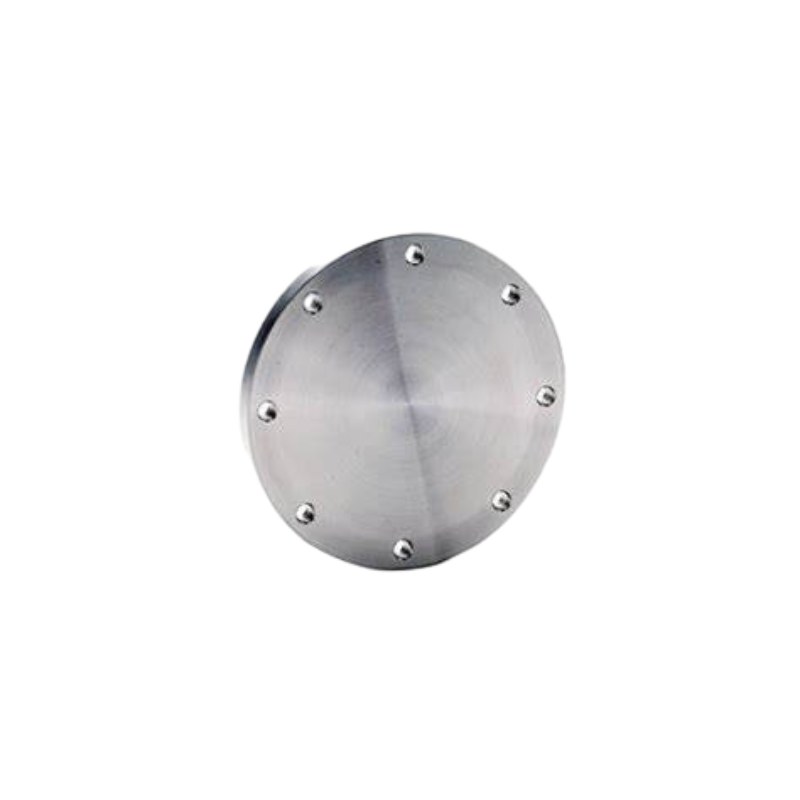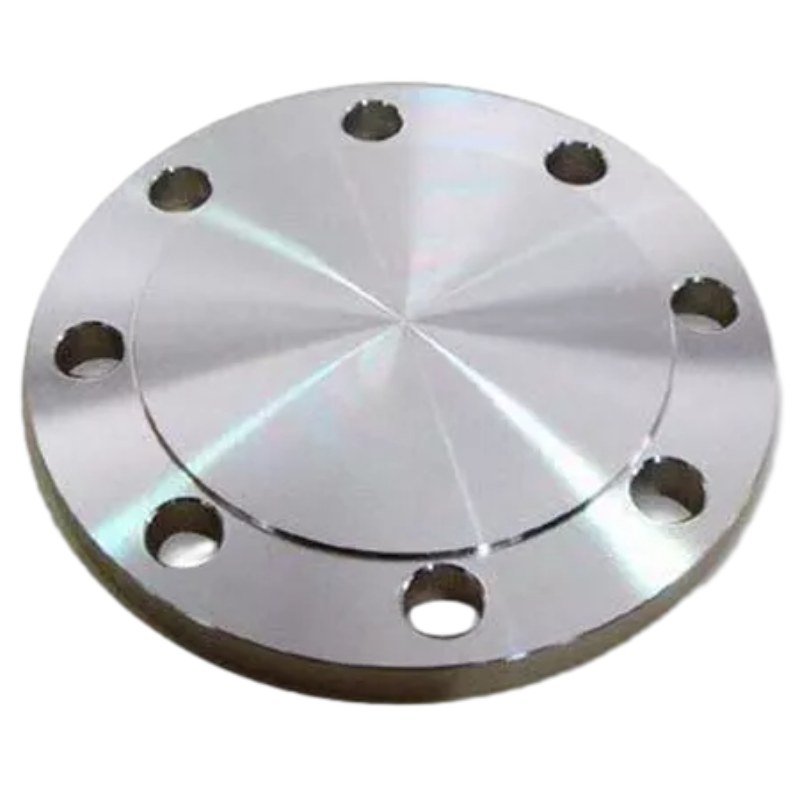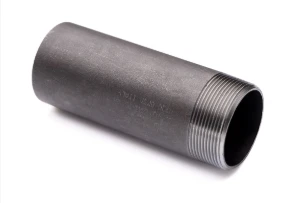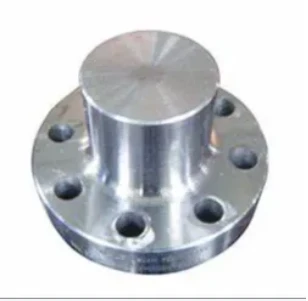-
Lig-on nga Disenyo: Ang GOST 12836-67 Blind Flange adunay usa ka patag, lingin nga plato nga adunay parehas nga gilay-on nga mga buho sa bolt sa palibot sa perimeter. Gitugotan niini nga disenyo ang dali nga pag-align ug pag-bolting sa mating flange, nga naghatag usa ka lig-on ug lig-on nga solusyon sa pagsira alang sa mga sistema sa tubo.
-
Luwas nga Pagbugkos: Kung gi-install sa tumoy sa usa ka tubo, ang patag nga nawong sa GOST 12836-67 Blind Flange nagmugna usa ka hugot nga selyo, nga nagpugong sa pagtulo sa likido ug nagmintinar sa integridad sa sistema sa tubo. Kini nga luwas nga katakus sa pagbugkos nagsiguro sa labing maayo nga pasundayag ug kaluwasan, bisan sa ilawom sa grabe nga mga kondisyon sa pag-operate.
-
Daghag Gamit nga Aplikasyon: Gikan sa mga refinery sa lana ug gas hangtod sa mga planta sa pagproseso sa kemikal ug mga network sa pag-apod-apod sa tubig, ang GOST 12836-67 Blind Flanges nakakaplag daghang gamit nga aplikasyon sa lainlaing mga industriya. Kung gigamit alang sa mga katuyoan sa pag-inusara, pagsulay sa presyur, o temporaryo nga pagsira, kini nga mga flanges nagtanyag kasaligan ug kalig-on sa mga kritikal nga sistema sa tubo.
-
Malungtaron nga Pagtukod: Gitukod gikan sa taas nga kalidad nga mga materyales sama sa carbon steel, stainless steel, o alloy steel, GOST 12836-67 Blind Flanges nagpakita sa talagsaong kalig-on ug kalig-on. Gi-engineered sila aron makasugakod sa mapintas nga mga kondisyon sa pag-operate, lakip ang makadaot nga mga palibot, taas nga temperatura, ug grabe nga presyur, pagsiguro sa dugay nga pasundayag ug kasaligan.
-
Precision Engineering: GOST 12836-67 Blind Flanges moagi sa tukma nga machining ug mga proseso sa inhenyeriya aron makab-ot ang higpit nga mga pagtugot sa dimensyon ug mga kinahanglanon sa paghuman sa ibabaw. Kini nga katukma nagsiguro sa pagkaangay ug pagkabaylo sa ubang mga standard nga flanges, pagpasayon sa seamless integration ngadto sa mga sistema sa tubo ug pagpamenos sa risgo sa mga leaks o mga kapakyasan.
-
Kasayon sa Pag-instalar: Ang pag-instalar sa GOST 12836-67 Blind Flanges episyente ug prangka, nga nanginahanglan yano nga pag-align ug pag-bolting sa tumoy sa tubo. Ang ilang standardized nga mga sukod ug disenyo nagpadali sa sayon nga pag-integrate ngadto sa kasamtangan nga mga piping network, nga nagpamenos sa oras sa pag-instalar ug mga gasto sa pagtrabaho.
Pangunang mga bahin:
- Lig-on nga disenyo alang sa luwas nga pagsira
- Lig-on nga pagbugkos nga adunay patag nga disenyo sa nawong
- Daghag gamit nga aplikasyon sa tibuok industriya
- Malungtaron nga pagtukod alang sa dugay nga pasundayag
- Precision engineering alang sa hugot nga pagtugot
- Kasayon sa pag-instalar sa yano nga pag-align ug bolting
Material Selection for GOST 12836-67 Blind Flanges: What You Need to Know
When it comes to GOST 12836-67 blind flanges, selecting the appropriate material is crucial for ensuring functionality, safety, and longevity in various applications. GOST standards, established by the Euro-Asian Council for Standardization, Metrology and Certification, guide the specification of materials to maintain the integrity of piping systems.
Key Considerations for Material Selection:
1. Corrosion Resistance: One of the primary factors in choosing a material for GOST blind flanges is its ability to resist corrosion. Stainless steel (such as 304, and 316) is a popular choice due to its excellent resistance to oxidizing environments. For applications involving aggressive chemicals, alloys like Inconel or Monel are often considered.
2. Pressure and Temperature Rating: GOST blind flanges need to be rated for the specific pressure and temperature conditions they will face. Material selection must align with the service conditions to avoid failure. For high-pressure applications, carbon steel flanges can be suitable, provided they are properly treated or coated.
3. Weldability and Machinability: Depending on installation requirements, the selected material should offer appropriate weldability and machinability. If modifications or on-site fabrication are necessary, choosing materials that can be easily welded is essential.
4. Standards Compliance: Ensure that the materials selected comply with all relevant GOST standards. This not only guarantees quality but also maintains compatibility within the piping system.
5. Cost-effectiveness: While material selection should prioritize performance and safety, cost considerations also play a significant role, especially in large-scale projects. Finding a balance between budget and quality is essential.
Differences Between GOST 12836-67 Blind Flange and Other Flange Standards
When comparing the GOST 12836-67 blind flange with other flange standards, several key differences emerge that reflect the unique characteristics and applications of the Russian standard. The GOST (Gosudarstvennyy Standart) system is a set of regulations and guidelines that govern various industrial products, including blind flanges, which are used to seal off piping systems.
One of the primary differences lies in the dimension and pressure rating classifications. GOST 12836-67 blind flanges are specifically designed according to Russian specifications, with dimensions that may differ significantly from those outlined in ANSI, ASME, or ISO standards. For instance, while ANSI/ASME flanges are typically categorized into nominal pipe sizes (NPS) and pressure classes, GOST flanges feature a unique set of sizes and pressure ratings, making it essential for engineers to select the appropriate type based on regional standards.
Another notable difference is the material composition. The GOST standard emphasizes the use of specific materials that are suited for the harsh Russian climate and industrial requirements. While common materials such as carbon steel and stainless steel are also used in other standards, GOST may specify additional material grades to accommodate unique environmental challenges, including extreme temperatures and corrosive conditions.
Additionally, the manufacturing and testing processes for GOST 12836-67 blind flanges are subject to local industry regulations, which might include stricter quality assurance protocols compared to other international standards. This ensures that the flanges not only meet dimensional specifications but also effectively withstand the pressures and temperatures expected in typical applications within Russia.
In summary, while GOST 12836-67 blind flanges share similarities with other flange standards, their unique dimensions, material requirements, and quality assurance processes set them apart. Understanding these differences is crucial for engineers and designers when selecting flanges for specific applications in diverse geographical locations.








